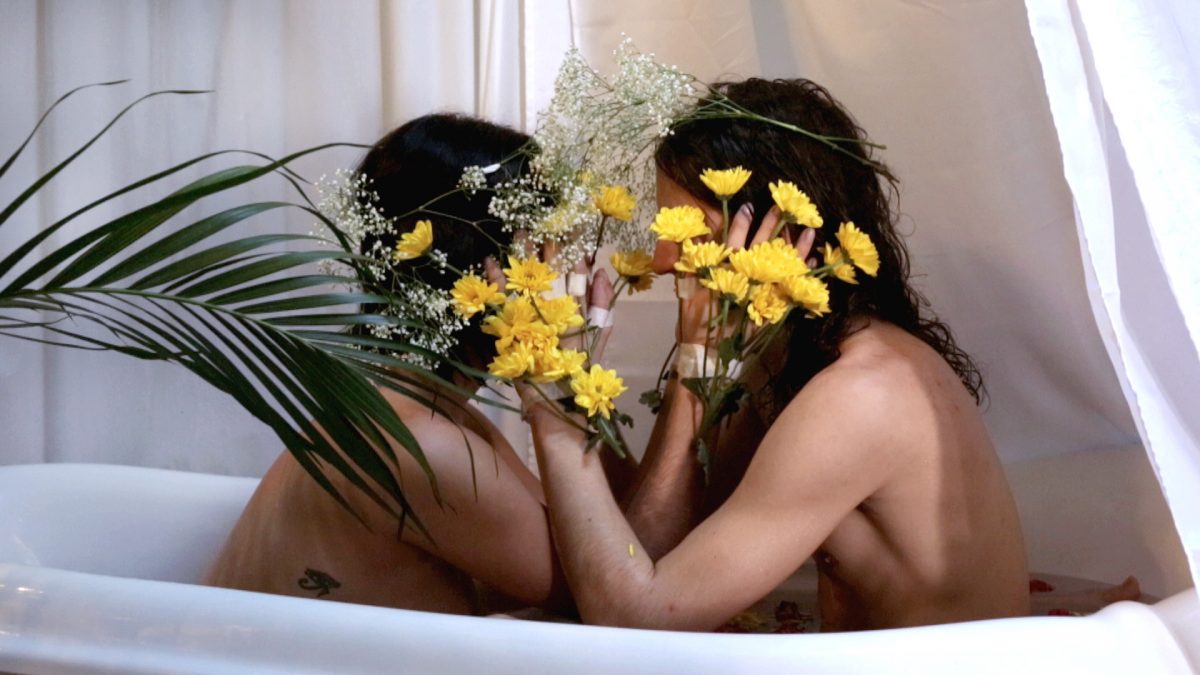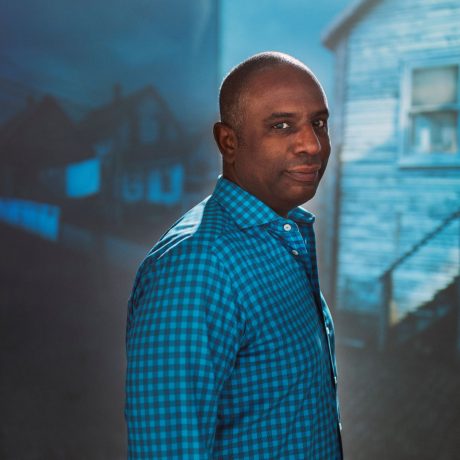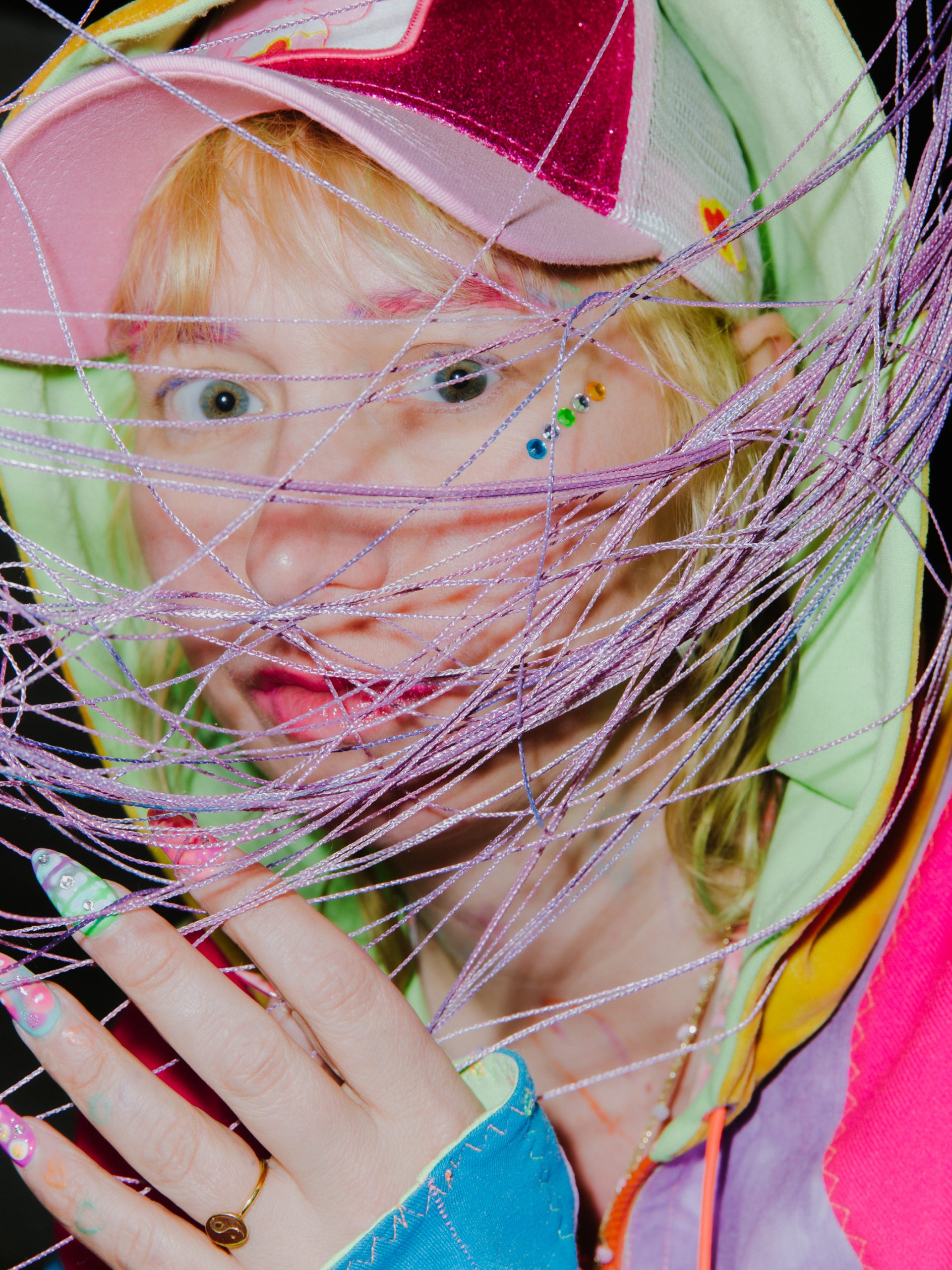
The pink pubes did it for me. For an event in 2012, Melanie Bonajo adapted one of my favourite works, VALIE EXPORT’s Action Pants: Genital Panic (1969). Inviting participants to “sacrifice their shame”, Bonajo photographed them in crotchless clothing, revealing fluffy genital areas daubed in hot tones: violet, angelica, tangerine, bubblegum. And pink.
This manoeuvre, entering an anxious zone and making it so visible, so bright, so OTT that it transforms, remains a central dynamic of Bonajo’s work. For the ongoing 2005 series Thank you for hurting me. I really needed that… the non-binary Dutch visual artist photographed their low moments, resisting not only the social pressure to look as though we’re having a good time, but also the pervasive fear of unhappiness itself. Bonajo reminds us that we need to feel sad. Hurt is part of the human experience.
The wisdom in honouring the body when it says “no” is essential to the sex-positivism that drives When the Body Says Yes, Bonajo’s new work for the 59th Venice Biennale. The immersive video installation follows the members of a group of diverse ages, bodies and gender identities as they explore touch as a source of pleasure without prioritising sexual response.
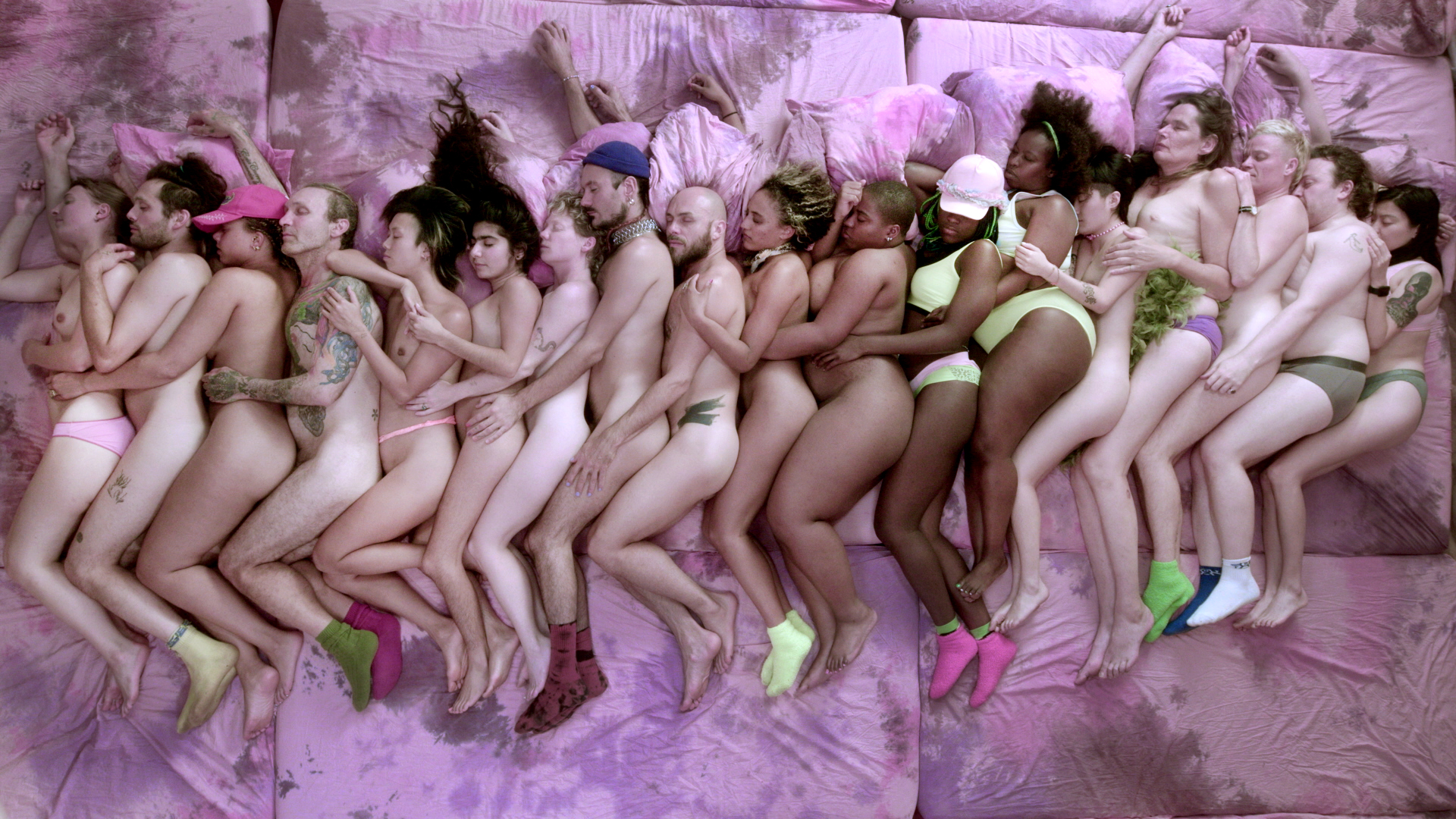
We hear interviews with the participants as we encounter them alone in natural settings: floating in water or climbing trees. Each describes taboos acquired around their bodies, some imposed by religious teaching, others by oppressive social structures or family behaviours. The ecstatic culmination of the film takes place with the participants blindfolded in an oil pool, their glistening naked bodies rolling across one another.
“Rather than driving everything toward a work to be shown in Venice, the Biennale became a staging post within a larger process”
I meet Bonajo on the stone steps of a Venetian church (this year, The Netherlands lent its usual Giardini pavilion to Estonia, choosing to show Bonajo’s work in a 10th-century church instead). The artist is hard to miss: dressed in a hot pink and gold onesie with rainbow panels and protruding lime green barbs. Their nails are slime green and heavily encrusted. Sharp but playful, like their art.
Within the chapel a video screen is suspended above a squishy landscape of colourful, suggestive hillocks. It still feels like a temple, but one honouring the body, not a disapproving nobodaddy.

“We designed the space so the body is already relaxing into these playful structures,” Bonajo explains. “You can’t walk straight up: you need to bend with it. And that already changes the brain-body connection. The body is invited to relate differently to the space and to the other bodies within it.”
I tell the artist that watching a work about touch and sexual response in a space dotted with male colleagues had been … a little awkward. Bonajo, who is a somatic sex coach, perks up: “What kind of questions came up?” I confess that I couldn’t work out whether I felt more comfortable watching while seated near people I knew, or complete strangers.
“We designed the space so the body is already relaxing into these playful structures. You can’t walk straight up: you need to bend with it”
Bonajo describes the work as a “mirror” from which we can examine our own responses: “For me, it’s first of all about what it brings up for the viewer about their own touch language, or intimacy language, and how they position themselves towards what has been shown.”
The commission for this year’s Dutch pavilion came at a pivotal moment. Bonajo was at the brink of quitting the art world to work full-time as a therapist when they got the call saying that they had been selected to represent The Netherlands.

When the Body Says Yes is not a performance to camera. The participants are all people Bonajo encountered personally. They worked together for six months ahead of the film: most of the process took place off camera. “It’s about building a container of safety through which proximity can be possible and fully enjoyable in the senses, taking away the mind,” the artist explains. “The oil pool where people are blindfolded is, for me, a ritual space. I like to address it as a body prayer, where we can feel our shared humanity by taking away our judgement through our eyes.”
“It’s about building a container of safety through which proximity can be possible and fully enjoyable in the senses”
This is not just about sex, it’s also about power structures. To create a safe arena in which “we all have the permission to take up as much or as little space as we really desire” the group first needed to unpack the internalised constraints of “colonialism, racism and sexism,” says Bonajo.
The work is explicitly anti-patriarchal. Working with people one-on-one as a somatic sex coach and sexological body worker, Bonajo came to realise pretty much every problem people had around sexuality was related to their “social location in society.” The issues they were encountering were not personal: they were structural and pervasive.
Making the earlier Night Soil trilogy, which examined alienation from the natural world in the West, Bonajo immersed themself in existing communities. Night Soil – Fake Paradise (2014) explored the experiences of Western women who turned to psychedelic plants for healing rituals, participating in Ayahuasca ceremonies. For Night Soil – Economy of Love (2015), Bonajo shared space with a group of Brooklyn-based sex-workers inspired by legends of Sumerian temple prostitutes. Here, sexual experience was repositioned as devotional, even sacred.
For When The Body Says Yes, Bonajo wanted to establish a new paradigm: to go deeper, integrating life on and off screen. “I wanted to create groups where art making can be aligned with my political views, my activism and the principles of social justice, and then see how that can work,” they say. Rather than driving everything toward a work to be shown in Venice, the Biennale became a staging post within a larger process. The workshops and interactive performances with the group that took place ahead of the Biennale will continue after its conclusion in November.
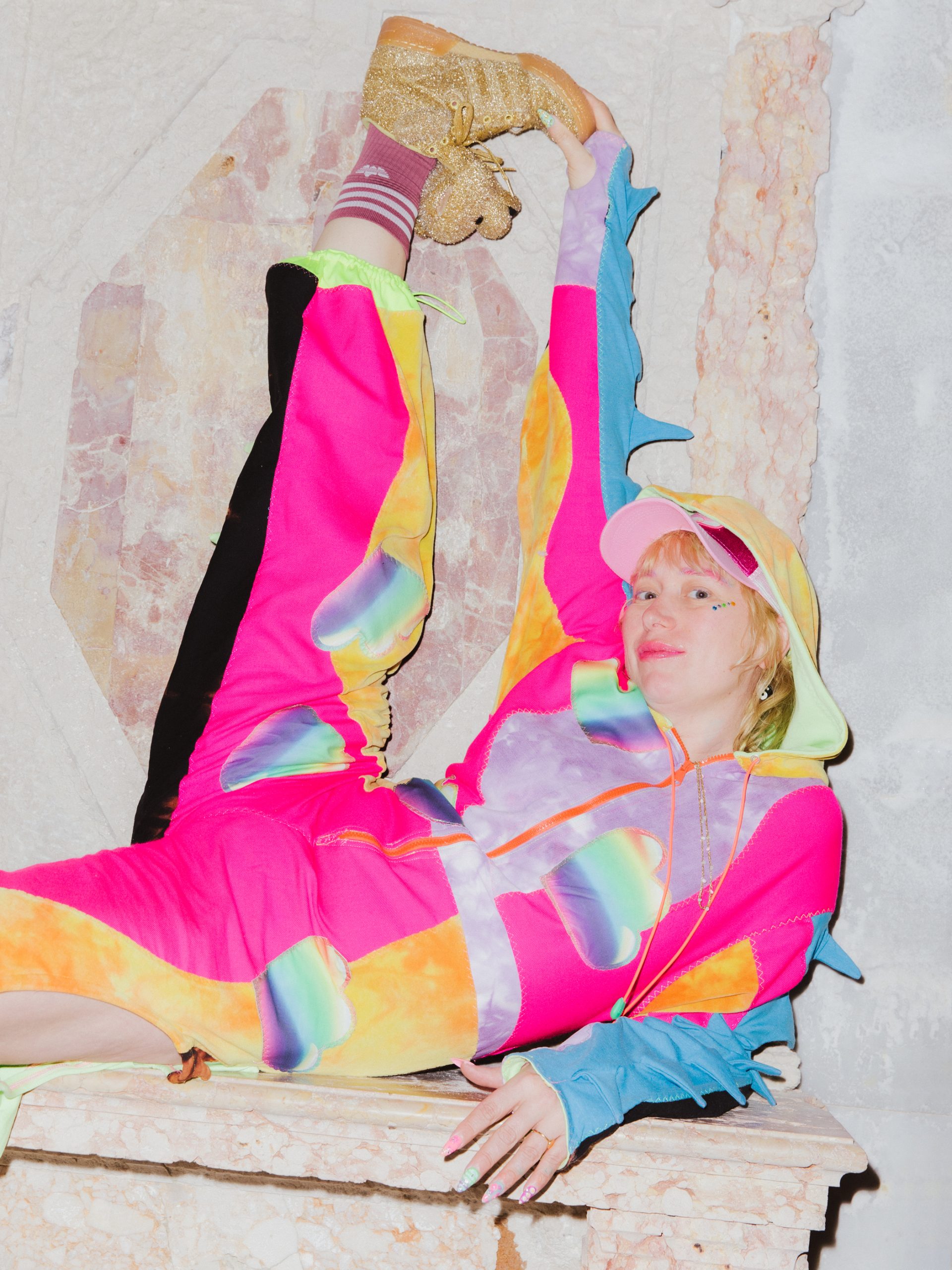
I keep having to stop myself asking Bonajo how those on screen feel about their vulnerable and sensitive states being shared so publicly. Bonajo presents When The Body Says Yes as group work in which consent has already played a central role, so the established power dynamics of the art world should not apply.
Why, then, did I keep reaching for these questions when there should be no need for them? Even for Bonajo, extricating themselves from established structures of art making “was complex, I must admit, and it was a risk,” they say. “But I also couldn’t do just an art thing.”
Hettie Judah is a freelance writer, art critic and journalist
